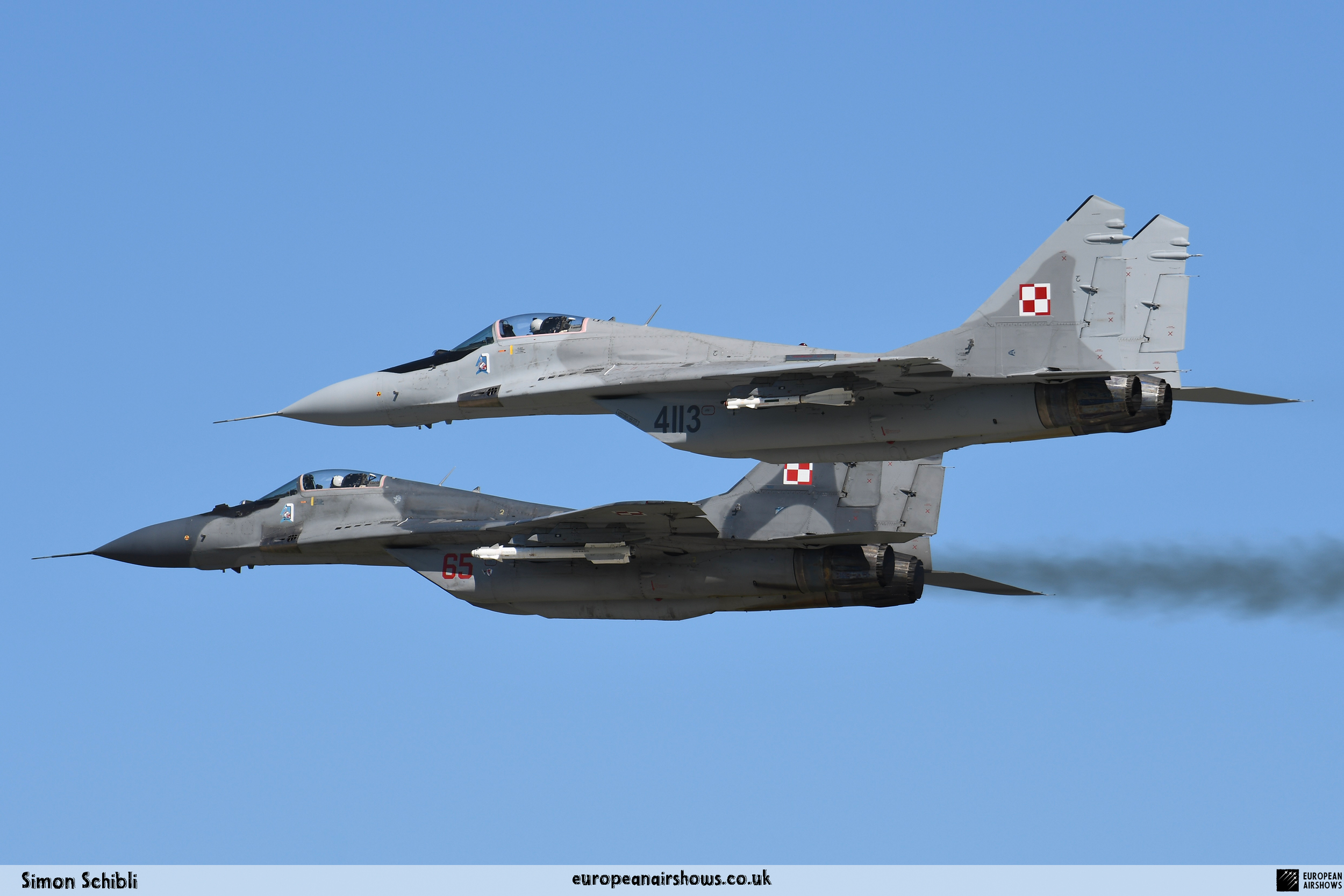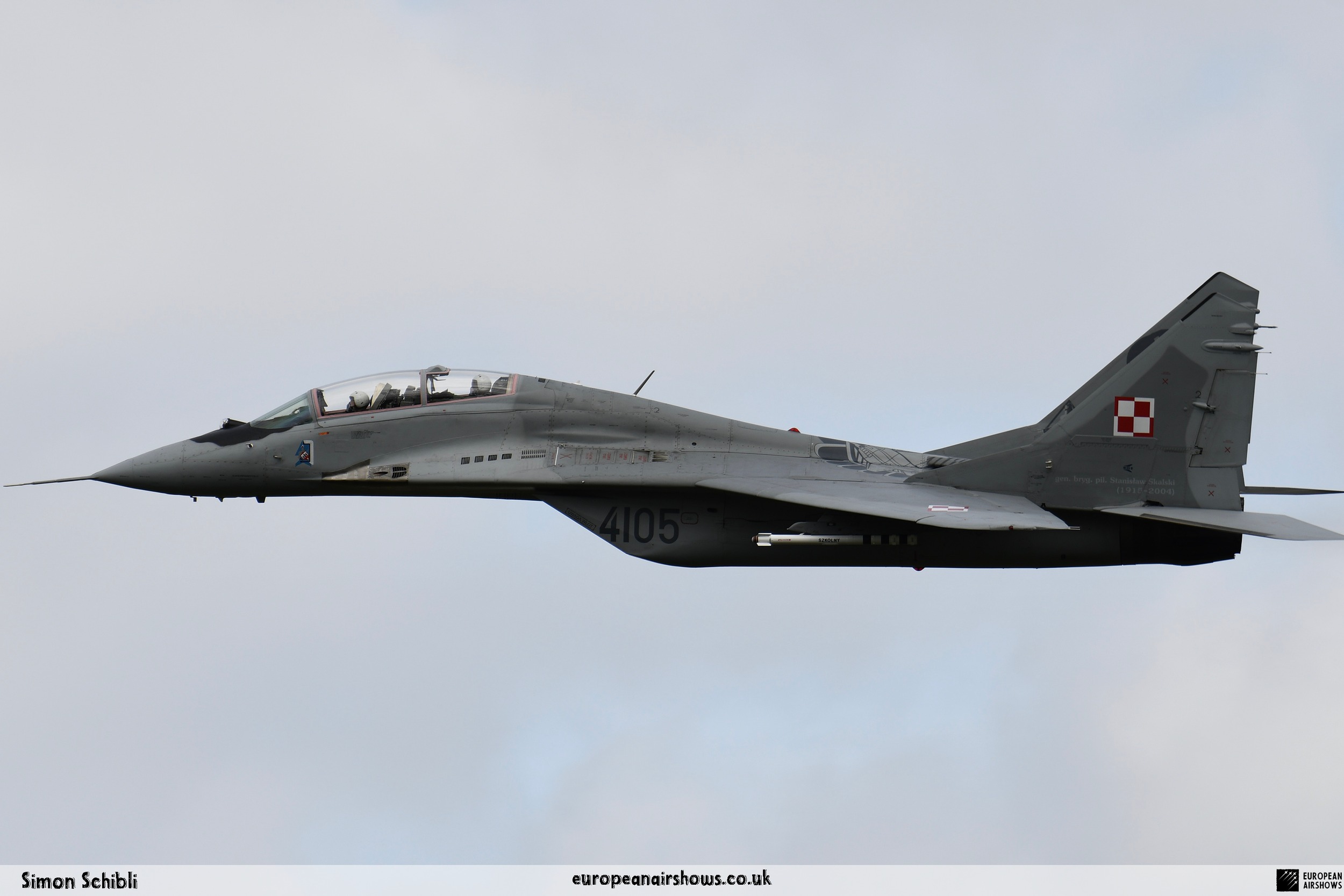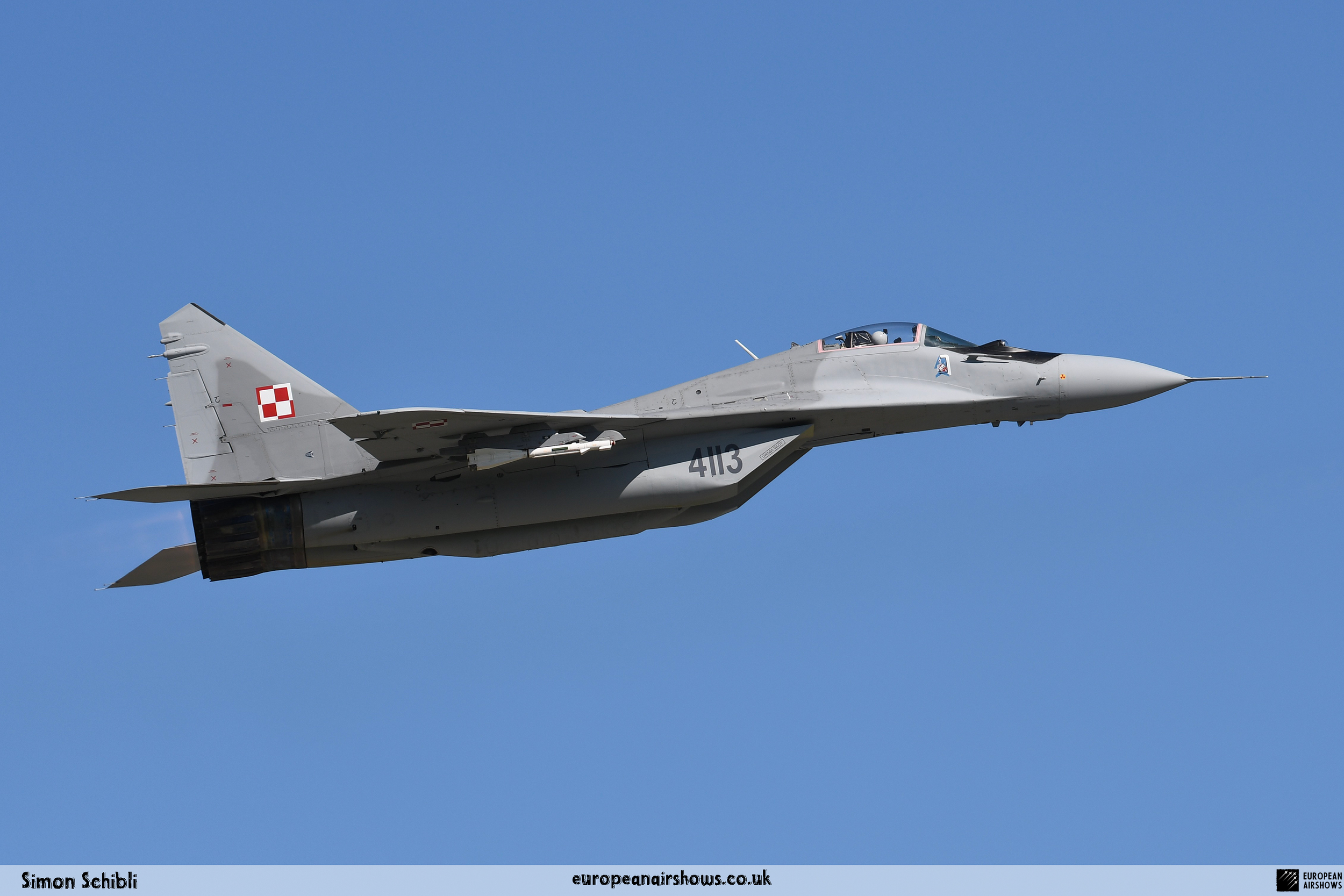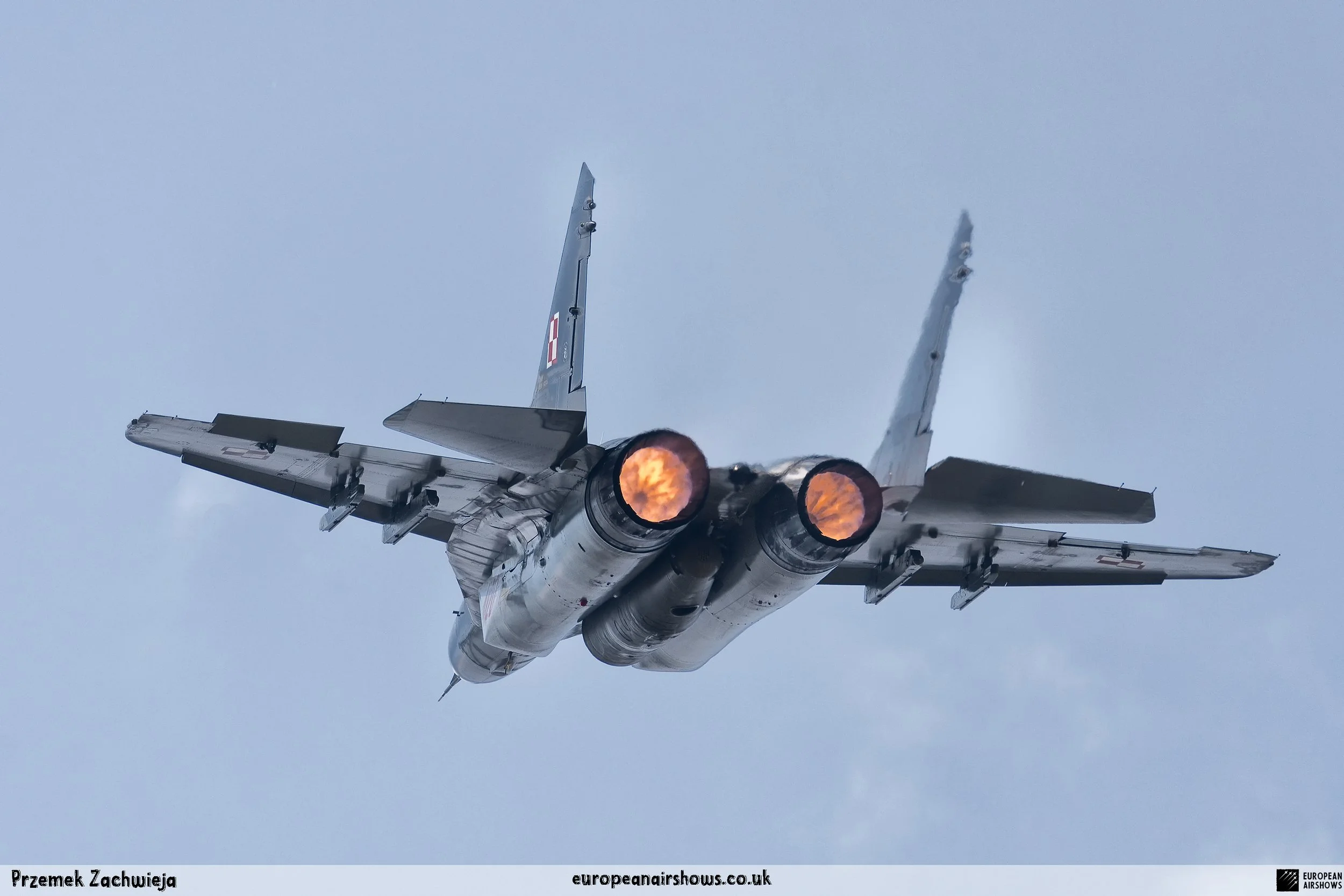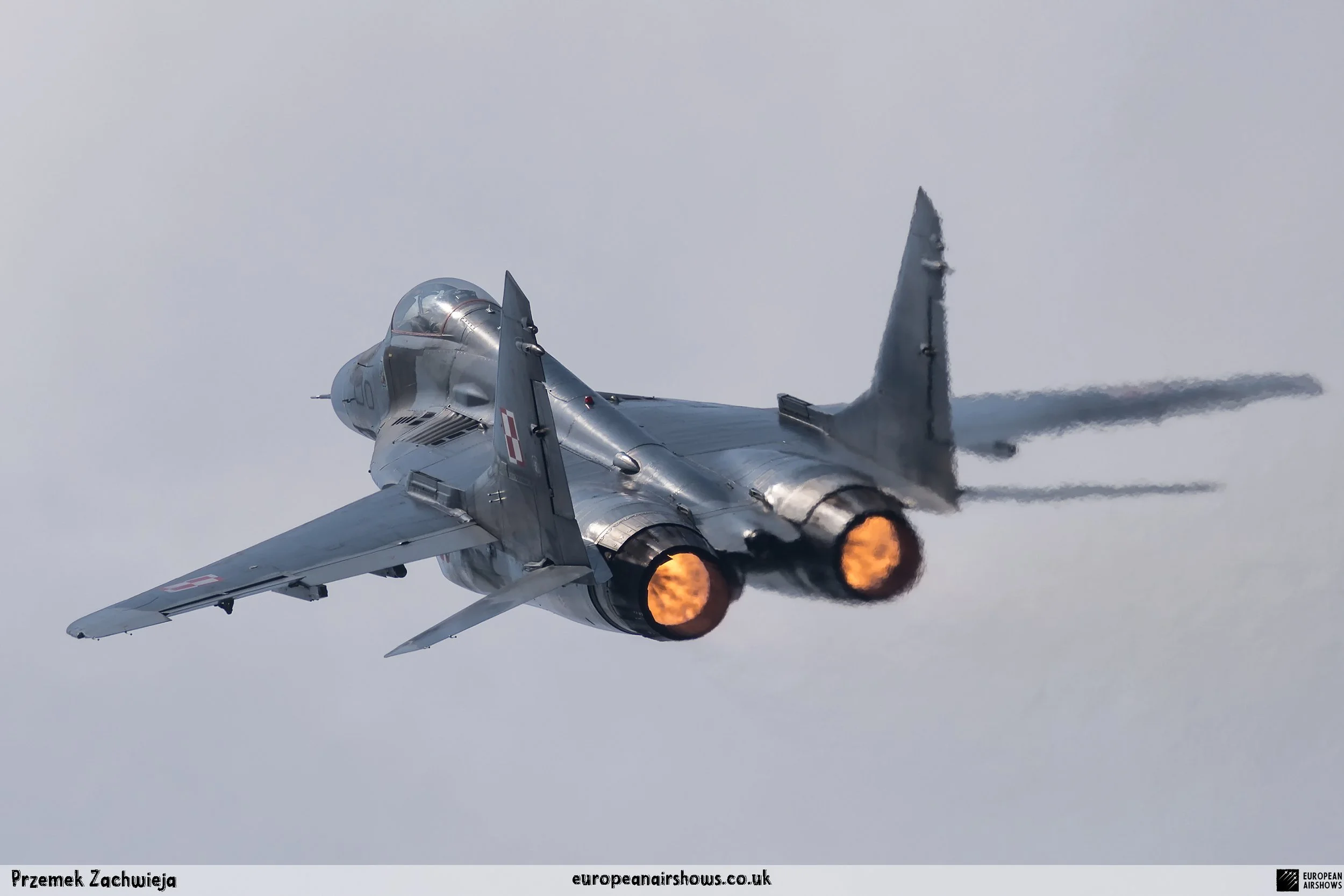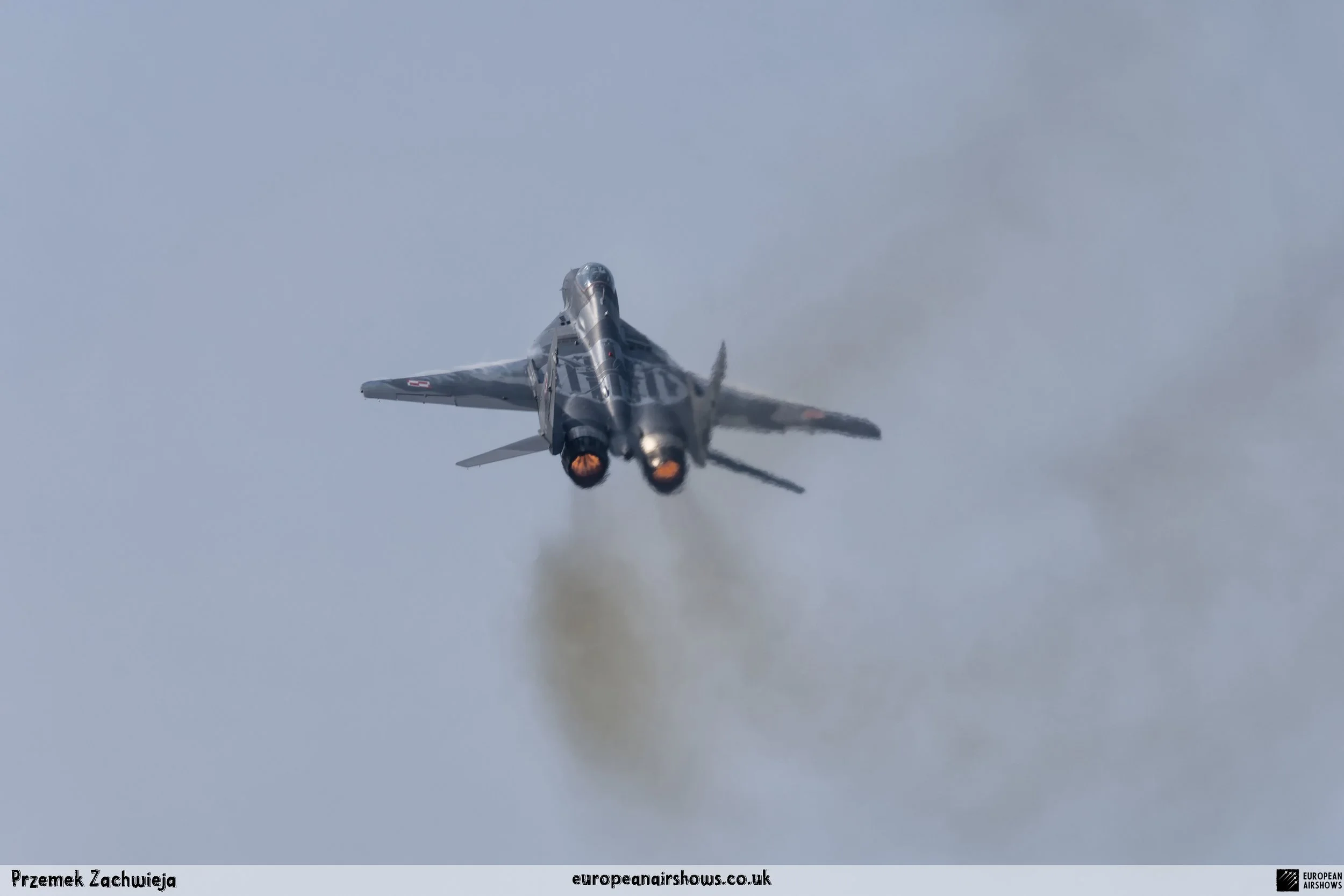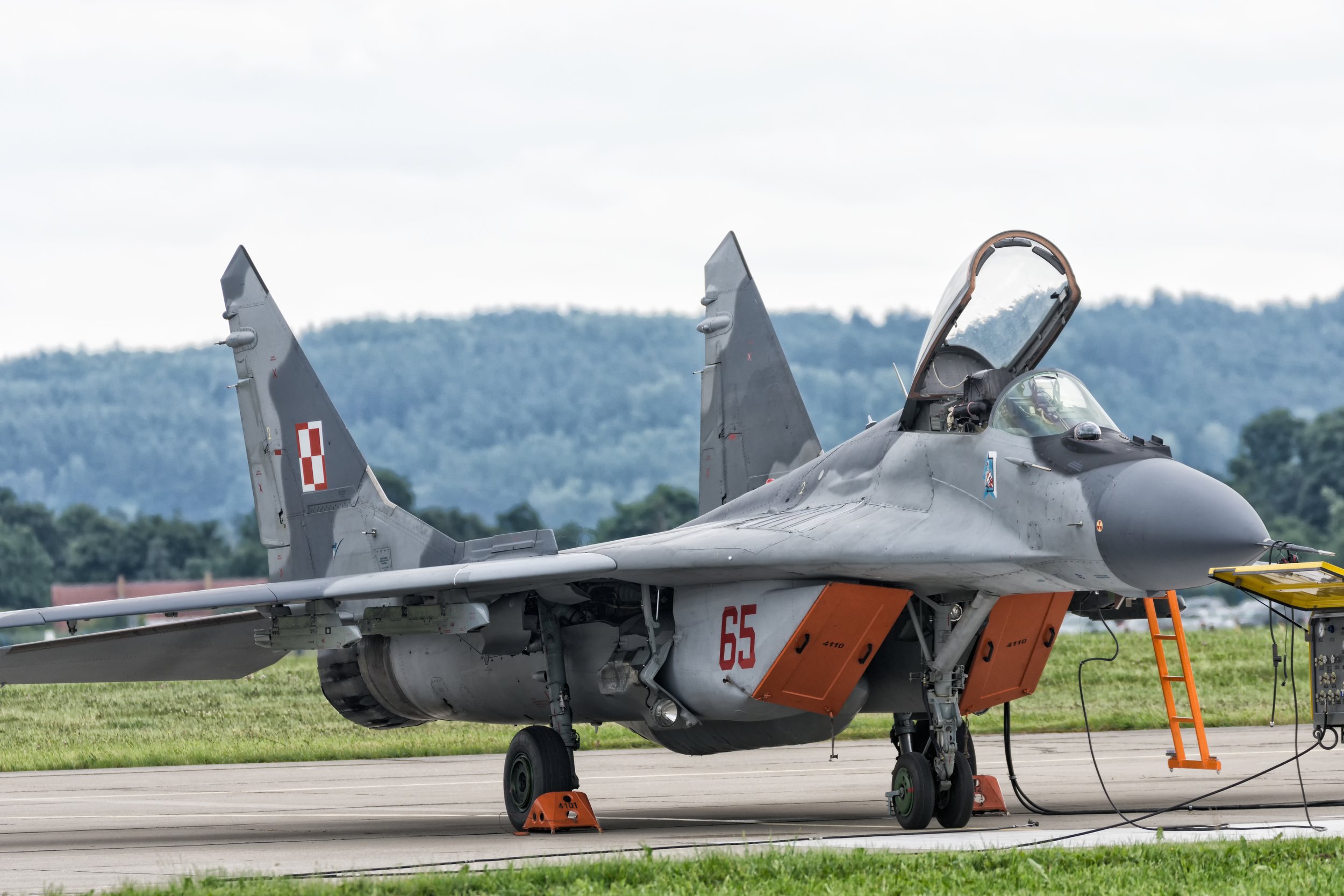
October 6 / Mikoyan MiG-29 first flight
First Flight 6 October 1977
Mikoyan MiG-29
The Mikoyan MiG-29, known by its NATO reporting name “Fulcrum,” is a twin-engine, fourth-generation multirole fighter aircraft developed by the Soviet Union in the late 1970s and early 1980s. It has become one of the most iconic aircraft in the history of military aviation, symbolizing not only Soviet engineering prowess but also the geopolitical tensions of the Cold War era. The MiG-29 was designed to complement the MiG-23 and to provide the Soviet Air Force with a capable air superiority fighter that could also perform ground attack missions.
The genesis of the MiG-29 can be traced back to the Soviet Union’s recognition of the need for a new generation of fighters that could counter the advanced capabilities of Western aircraft, particularly those emerging from the United States and NATO. The MiG design bureau, led by the legendary engineer Artem Mikoyan, began work on the aircraft in the early 1970s. The goal was to create a fighter that combined agility, speed, and advanced avionics, allowing it to excel in dogfighting and air-to-air combat while also being adaptable for ground attack roles.
The MiG-29 made its first flight on October 6, 1977, and the aircraft’s design featured several innovative elements. It was powered by two Klimov RD-33 turbofan engines, which provided the necessary thrust for high performance. The MiG-29’s aerodynamic design included a blended wing-body configuration that contributed to its agility and manoeuvrability. The aircraft was equipped with advanced avionics, including a radar system capable of tracking multiple targets, as well as a sophisticated weapons control system that allowed it to engage a variety of air-to-air and air-to-ground munitions.
One of the distinguishing features of the MiG-29 was its emphasis on dogfighting capabilities. The aircraft was designed to excel in close-range combat, with a high thrust-to-weight ratio and exceptional manoeuvrability. This made it a formidable opponent in aerial engagements, capable of outmanoeuvring many of its contemporaries. The MiG-29 was armed with a combination of missiles, including the R-27 and R-73, as well as a 30mm GSh-30-1 cannon, giving it a versatile arsenal for both aerial and ground targets.
The MiG-29 entered service with the Soviet Air Force in 1983, and its operational debut came during the Soviet-Afghan War, where it was used primarily for air support and ground attack missions. The aircraft proved its effectiveness in these roles, but it was not until the late 1980s and early 1990s that the MiG-29 gained international recognition. The aircraft participated in various air shows and exhibitions, showcasing its agility and advanced capabilities to audiences around the world.
With the dissolution of the Soviet Union in 1991, the MiG-29 found itself in a new geopolitical landscape. The aircraft was widely exported to former Soviet republics and other nations, including India, Poland, and Hungary. Each of these countries adapted the MiG-29 to meet their specific needs, resulting in various upgrades and modifications. The aircraft’s affordability and performance made it an attractive option for many air forces looking to bolster their capabilities without incurring the costs associated with Western fighters.
The MiG-29’s combat experience was further enhanced during the Yugoslav Wars of the 1990s, where it was used by the Yugoslav Air Force. The aircraft faced NATO forces during Operation Allied Force in 1999, and its performance in combat was closely scrutinized. Despite its advanced capabilities, the MiG-29 struggled against NATO’s superior technology and tactics. The lessons learned from these engagements led to further upgrades and modernization efforts for the aircraft.
Throughout the 2000s and into the 2010s, various countries continued to operate and upgrade their MiG-29 fleets. The aircraft underwent modernization programs that included new avionics, improved radar systems, and enhanced weaponry. Countries like India and Russia invested in upgrading their MiG-29s to keep them relevant in modern combat scenarios. The MiG-29K, a carrier-based variant, was developed for the Russian Navy and showcased the aircraft’s adaptability for different operational environments.
The MiG-29 also played a role in international conflicts beyond its original design intent. For instance, the aircraft was used by the Libyan Air Force during the civil war in 2011, and it has been a part of the air forces of several nations involved in various regional conflicts. Its continued relevance in modern air combat reflects the enduring legacy of the MiG-29 as a versatile multirole fighter.
In the realm of aviation enthusiasts and collectors, the MiG-29 has gained a cult following. Its sleek design, impressive performance, and storied history have made it a popular subject for restoration and preservation efforts. Various examples of the aircraft have been displayed in museums and at airshows, allowing new generations to appreciate its significance in the evolution of military aviation.
In summary, the history of the MiG-29 is a testament to the technological advancements of the Cold War era and the ongoing evolution of military aviation. From its inception as a response to Western threats to its role in numerous conflicts around the world, the MiG-29 has proven to be a formidable aircraft that has adapted to the changing landscape of aerial warfare. Its legacy continues to influence the design and development of modern fighter aircraft, ensuring that the MiG-29 will be remembered as one of the defining fighters of its generation.
MiG-29 Facts
Designed for Air Superiority: The MiG-29 was primarily designed as an air superiority fighter to counter the U.S. F-15 and F-16. Its design emphasizes agility, speed, and the ability to operate in a variety of combat scenarios.
First Flight: The MiG-29 had its maiden flight on October 6, 1977. It entered service with the Soviet Air Force in 1983, and its performance quickly established it as one of the leading fighters of its time.
Thrust Vectoring: Some variants of the MiG-29, such as the MiG-29OVT, feature thrust vectoring capabilities, allowing for enhanced manoeuvrability. This technology enables the aircraft to perform advanced aerial manoeuvres, giving it an edge in dogfights.
Advanced Avionics: The MiG-29 is equipped with sophisticated avionics, including a radar system capable of tracking multiple targets and engaging them simultaneously. This capability enhances situational awareness and combat effectiveness.
Combat Experience: The MiG-29 has seen combat in various conflicts, including the Gulf War, the Yugoslav Wars, and the War in Georgia. Its performance in these conflicts has contributed to its reputation as a capable multirole fighter.
Export Success: The MiG-29 has been exported to numerous countries, including India, Poland, and Algeria. Many of these nations have modified the aircraft to suit their specific operational needs, leading to various upgrades and variants.
Carrier Operations: The MiG-29K is a naval variant designed for operation from aircraft carriers. It features folding wings and enhanced landing gear to accommodate carrier operations, allowing it to operate effectively in maritime environments.
Versatile Armament: The MiG-29 can carry a wide range of weapons, including air-to-air missiles (such as the R-73 and R-77), air-to-ground munitions, and a 30 mm cannon. This versatility allows it to engage various targets in different combat scenarios.
High Performance: The MiG-29 is known for its impressive performance, with a top speed of approximately Mach 2.25 (about 1,500 mph or 2,400 km/h) and a service ceiling of around 59,000 feet (18,000 meters). Its agility and speed make it a formidable opponent in air combat.
Ongoing Upgrades: The MiG-29 continues to receive upgrades and modernization efforts to enhance its capabilities. The MiG-29M and MiG-29SMT variants include advanced avionics, improved engines, and increased payload capacity, ensuring that the aircraft remains relevant in modern warfare.

